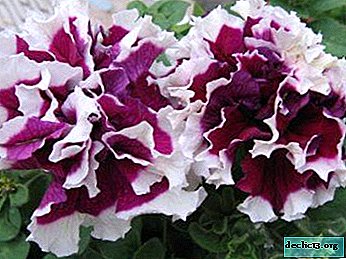What to do if the lemon leaves, ovaries and fruits fall, and why does this happen?

Many plant lovers, both professionals and amateurs, have encountered a problem when the leaves on the plant begin to fall off, although it is too early in terms of time, or the plant should not drop them at all.
The reasons can be very different, and in this article we will consider the most characteristic cases concerning lemon trees. Lemon is a rather whimsical plant for soil composition, lighting and humidity.
Why is falling off and what to do?
If you notice that the leaves of homemade lemon began to turn yellow and fall off, then you should take a closer look at how exactly this happens.The fact is that the nature of yellowing can help determine what the reason lies. Below is a complete list of how the plants turn yellow and fall off at home, why this happens and what kind of care the crop needs in this case.
What leaves turn yellow, dry and fall off?
If the leaves begin to turn yellow gradually, starting with the cuttings and gradually spreading over the leaves, after which the leaf falls off, then you are dealing with one of the following situations:
- Bad light. The most likely option, especially in winter. To correct the situation, you can rearrange the pot with the plant on the south window and surround it with several mirrors so that the light comes from all sides. You can extend the "daytime" for a lemon due to fluorescent lamps.
- Excessive watering. At the same time, the soil in the pot becomes dense and, of course, does not allow air to pass through well. Because of this, small roots begin to die out and the plant does not receive enough oxygen, which means that the young shoots dry out, and the leaves fall off. As countermeasures, you can transplant the plant or loosen the soil in this pot and do not forget to transfer the plant to a warmer room, but not to the heaters.
- Insufficient watering. Due to a lack of moisture, the plant gets rid of small sprouts that it cannot nourish with juice - small roots and part of the leaves. This only worsens the situation. You can carefully water the plant to correct the situation, the main thing is not to pour too much - it is very harmful.
- Sudden watering after a long drought. In principle, this is a combination of the two previous points. First, the plant does not receive enough nutrition from the soil, and then due to the large amount of water, the soil is compacted beyond any measure, which prevents the roots from consuming oxygen from the soil.
Watering after a drought should be gradual so that the plant slowly comes into shape. When the lemon comes to life a little, it should be transplanted into another pot, not forgetting to remove dried or starting to rot roots.
- Plant in winter at the battery. Lemons do not like dry air, and this is exactly what the included batteries and other heating devices do. If it is not possible to rearrange the plant, then you can periodically spray from the spray gun, or install a humidifier in the room.
- Watering with cold water. Almost all representatives of citrus can not absorb cold water, which leads to frostbite and the death of part of the roots. And this leads to the death of leaves. Therefore, before watering, the water should be heated a couple of degrees above room temperature.
- Heat. Despite the fact that citrus fruits love warmth, they negatively tolerate high temperatures. This applies to both water temperature and air temperature. Too hot water will damage the roots, and too hot air can cause the soil to dry quickly.
- Lack of minerals. This situation is more or less standard and everyone knows what to do - get fertilizers and put them into the soil. Again, the main thing is not to overdo it.
- Acclimatization. During acclimatization of a plant from stress and a sharp change in temperature, the metabolism may be impaired and the fluid velocity may change, which may lead to the loss of part of the crown. Therefore, when transporting plants, do not immediately put them in a warm or cold room (depending on the time of year).
For example, if you purchased a lemon tree in the winter, then the first time is to hold it not on the windowsill next to the battery, but in a cooler place so that the change in temperature regimes takes place gradually.
How to understand what the reason is in insects?
 In addition to more or less natural reasons, changes in leaves can be caused by harmful insectswhich are particularly attracted to the smell of citrus. The following are the main pests of lemon trees and how they affect the leaves.
In addition to more or less natural reasons, changes in leaves can be caused by harmful insectswhich are particularly attracted to the smell of citrus. The following are the main pests of lemon trees and how they affect the leaves.
- The bumps appeared dark brown, the leaves turned yellow and began to fall off. Beetles are the cause of such leaf changes. This is either scabies, or false shields, which feed on the sap of plants, hiding behind small shields. Fighting these pests is difficult, but possible. From folk remedies, it is recommended to wipe the leaves with a soap solution with the addition of alcohol. Or you can use special tools, such as Actellik.
- Turn yellow, curl, dry. Spider mite. In some cases, small red bugs - spider mites - can be seen on the yellowing leaves. In this case, it is necessary to use chemicals, such as the aforementioned "Actellika" or "Demitan."
- Yellowing of leaves, drying out of whole branches and deformation of leaves. The cause of such damage to the tree can be aphids - small, yellow-green bugs. To save the plant, you should either use soapy water or dichlorvos. To do this, the pot with the plant is packed in a tied bag, and cotton wool moistened with the drug is put there. After four hours, the plant must be pulled out and its leaves washed with clean, warm water.
Massive and abrupt discharge of green foliage
This unexpected event can be caused either by gummosis, or root rot, or commonplace stress.
- Gummosis. It appears as a rapidly growing dark spot on the cortex, after which the cortex begins to rot and gum oozes from it. The treatment is exclusively "surgical" - the affected parts are cut off, after which the wood is treated with 3% solution of copper sulfate, and then covered with beard paste.
- Root rot. It is impossible to quickly determine this disease until the leaves fall. You should dig up the plant, cut off the damaged roots and transplant into another soil.
- Stress. It was described above, it is associated with changes in temperature, gulf, drought and other drastic changes in the environment. The remedies are described, again, above.
All signs of plant diseases at room conditions and methods for their treatment
 In addition to the fact that the leaves turn yellow and fall off, there are other, more serious problems that deform the leaf body itself. This may be a consequence of the following diseases:
In addition to the fact that the leaves turn yellow and fall off, there are other, more serious problems that deform the leaf body itself. This may be a consequence of the following diseases:
- Scab or Wart. Their manifestations are similar and are expressed in the appearance on the leaves of tubercles, which gradually grow into pistols painted in yellow or pink. When infected with scab, over time a plaque appears on the tubercles, and the surface cracks. In this case, the leaves are also distorted. Leaves with similar characteristics, and sometimes entire branches, must be removed.
- Cancer. Damp spots appear on the underside of the sheet, which darken with time. In this case, a tubercle appears in the middle of the spot. After a short time, the sheet becomes cracked and becomes spongy. In the center of the sponge there is a small depression surrounded by a yellowish halo. Incurable.
- Mixed infection. It can take many different forms, but often it is enough to cure the roots that are damaged first and weaken the plant's resistance. The easiest way is to cut the rotten roots.
- Malsecco. This is a parasitic mushroom, due to which the leaves turn red-orange and die. It is necessary to cut off the affected parts of the plant.
- Sheet mosaic. Because of this disease, dark and light strokes appear on the leaves, and the leaves themselves lose their shape. Not treated.
- Late blight. In this disease, oval brown spots appear along the central vein. It is necessary to remove damaged sprouts and use the drug "Ordan" or "Profit".
- Xylopsorosis. In appearance, it is very similar to the hommosis mentioned above, but incurable.
Shortage of substances
The lack of several trace elements can lead to changes in the color of the leaves and the loss of their elasticity. Accordingly, it is enough to fertilize the plant or transplant it into fresh soil to solve the problem.
- Lack of nitrogen. It appears in the form of speckled spots.
- Phosphorus deficiency. The tips dry and fall off, turn rusty brown.
- Potassium deficiency. Between the veins folds and grooves appear.
- Iron deficiency. A network of green veins appears on the sheet.
What if the plant sheds ovaries and fruits?
 It is only natural that not only leaves, but also fruits with ovaries can suffer. There are several reasons and, for the most part, they are similar to the situations already mentioned above:
It is only natural that not only leaves, but also fruits with ovaries can suffer. There are several reasons and, for the most part, they are similar to the situations already mentioned above:
- Lack of minerals in the soil.
- Lack of sunlight.
- Lack or excess of water.
Separately, it is worth highlighting the lack of boron and manganese. It is simply determined by the appearance of the leaves. With a lack of manganese, the leaves become yellowish-gray, but remain green along the veins. If there is not enough boron, then the leaves begin to curl., and the shoot itself begins to turn yellow and stops growing.
Also, the cause of falling ovaries can be:
- Too many ovaries. The tree cannot provide food for all the ovaries and some of them die. As an aid, you can proactively remove excess ovaries.
- Tree too young. The situation is similar to too many ovaries - you need to remove this part of the sprout.
For the most part, leaf fall in lemon trees is not caused by diseases, but by soil or temperature problems. And, knowing the external signs, one can easily determine what caused such consequences, and therefore correct the situation. Of course, there are quite insidious diseases that simply cannot be recognized. But, in order to understand such subtleties, you must be a specialist.
Useful video
More information about why the leaves of a lemon tree fall, you can see in the video below:

















